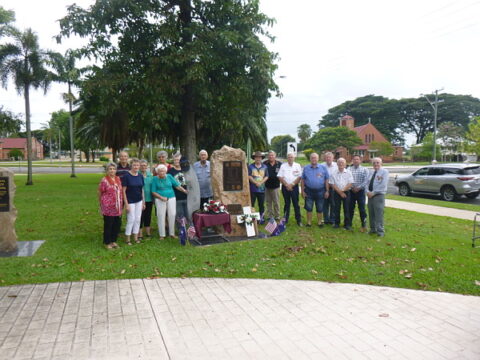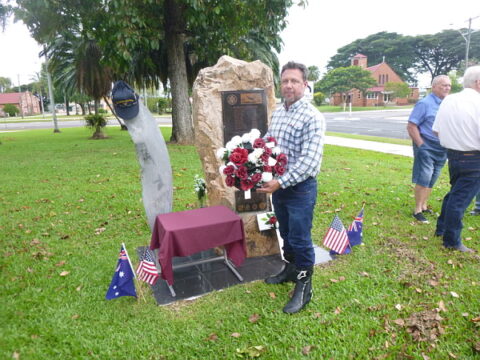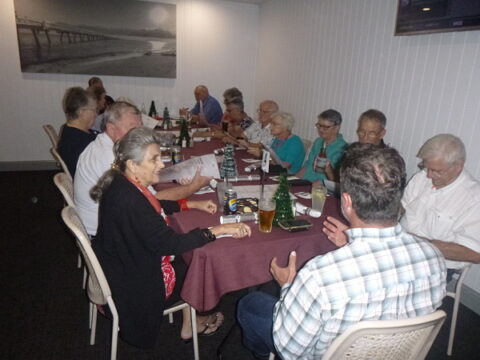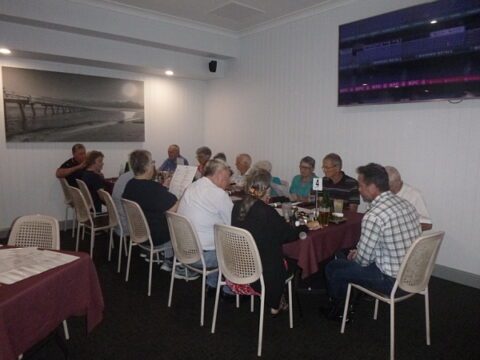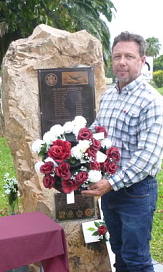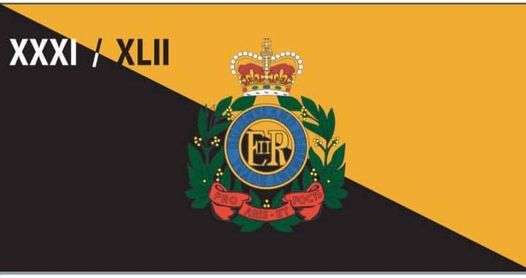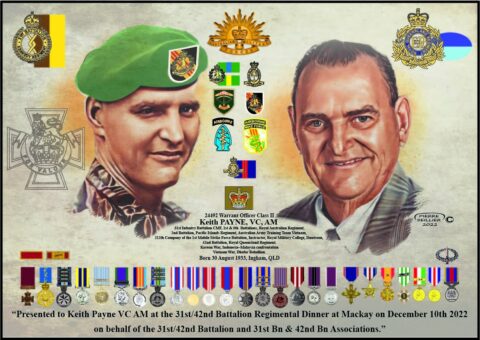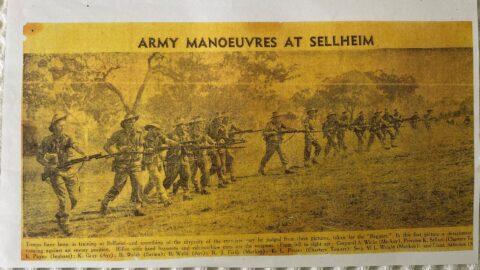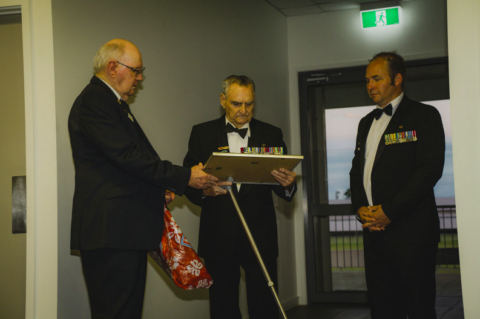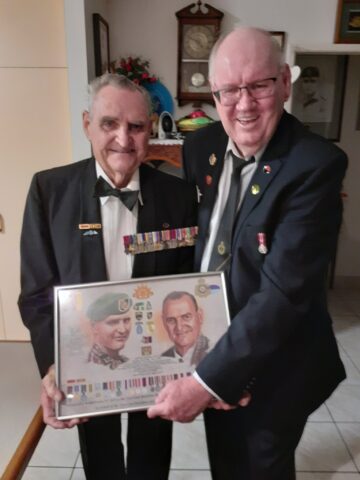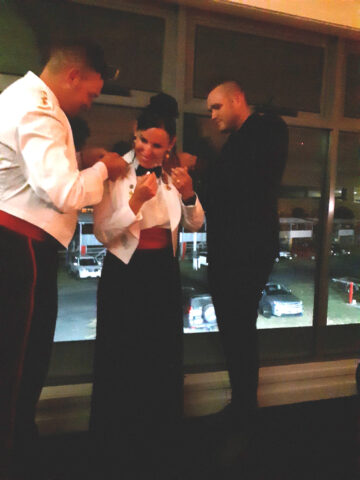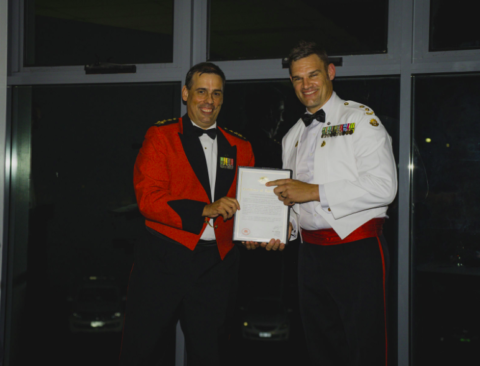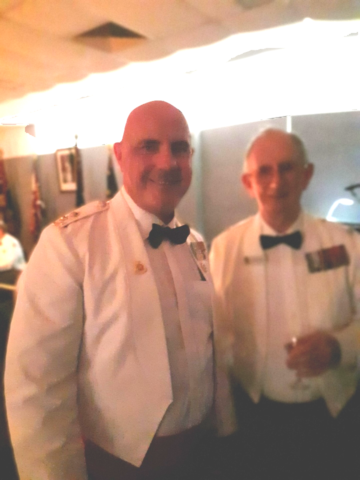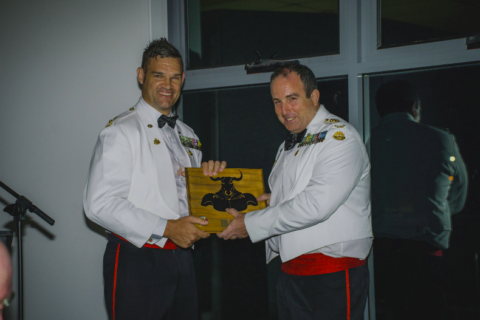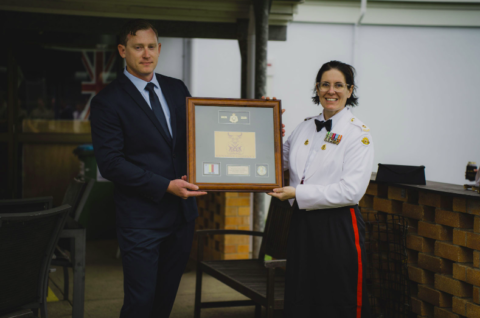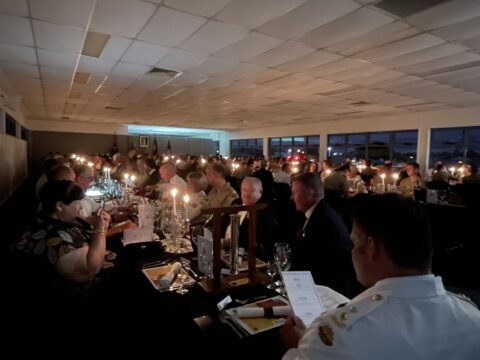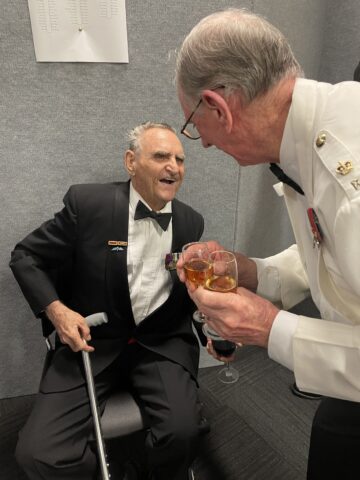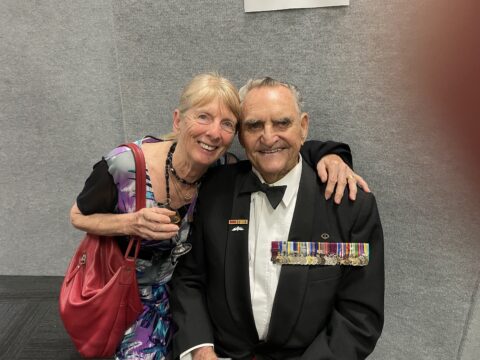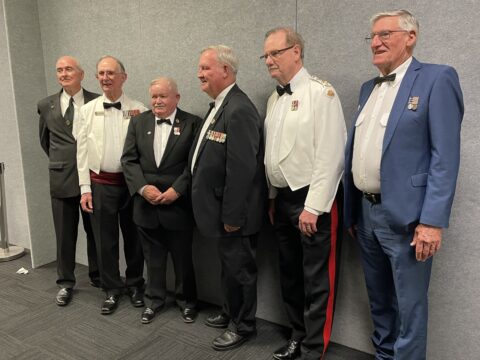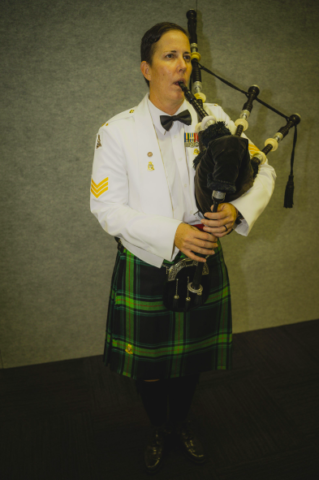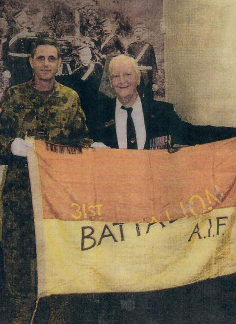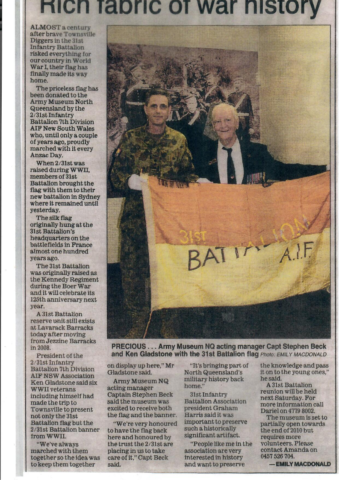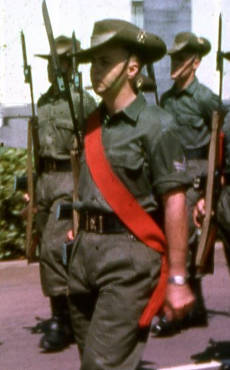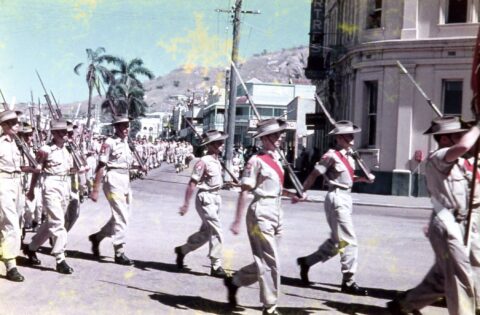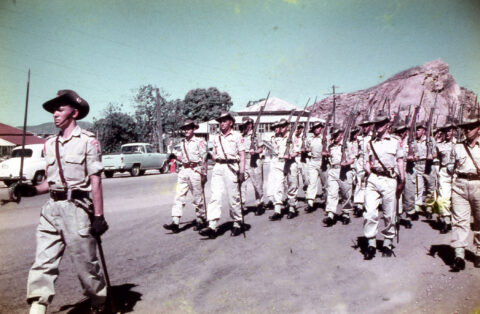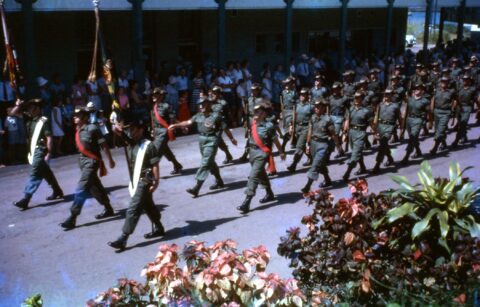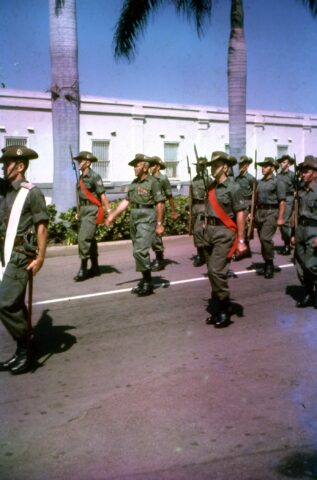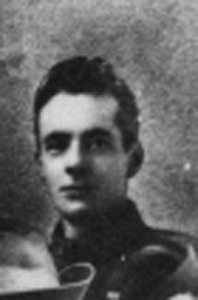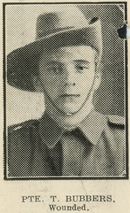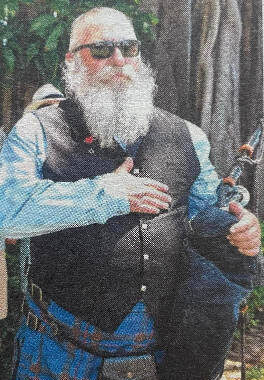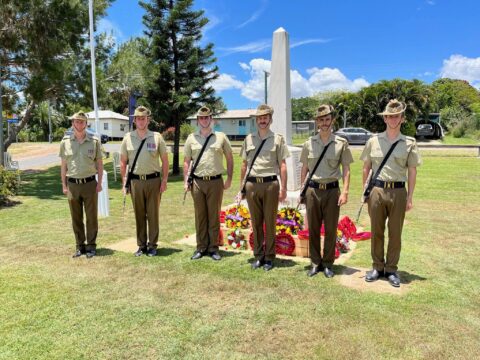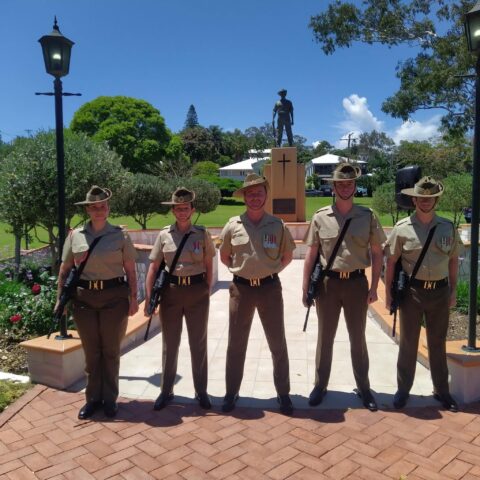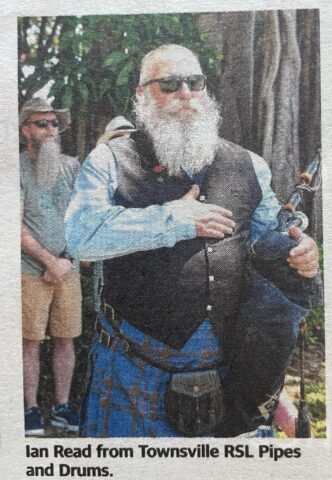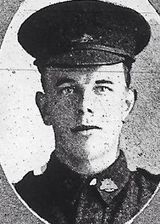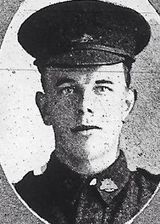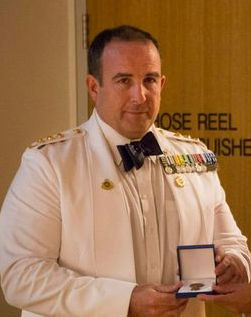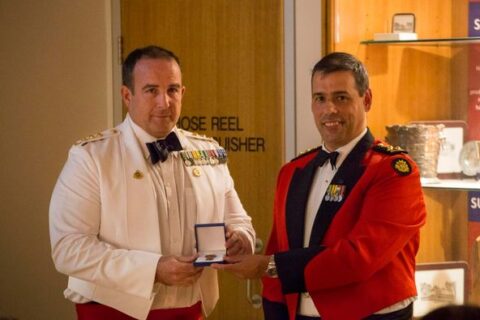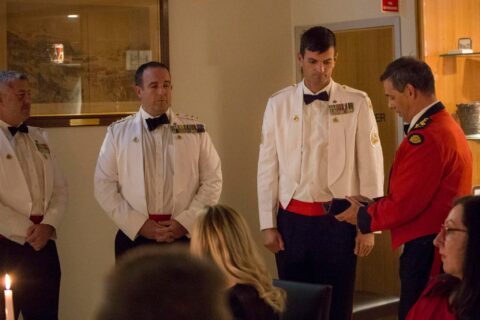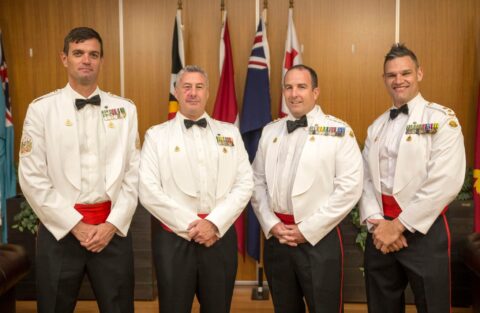Saturday night (10th Dec 2022) was an excellent occasion with the 31st/42nd Battalion The Royal Queensland Regiment, Regimental Dinner.
–
Association Member Mick James describes the evening:
It was attended by approx. 150 members of the Battalion, members of both Battalion Associations and invited Guests. The Mayor of Mackay Regional Council, Mr Greg Williamson & Mrs Annette Williamson headed the Guest list, with Guest Speaker Brig (Retd) Steve Graw & Mrs Dale Graw, Commander 11 Brigade, Brig Mark Armstrong and his RSM, WO1 Andrew Crook, and Mr Keith Payne VC AM. I had the honour of hosting Keith at the Dinner including picking him up from his home in Mackay and returning him there afterwards (with a driver). Keith also had a good friend with him, Darren Stendt who has 30 years service in the Army including 15 years in 1 Commando Coy.
–
After some excellent fellowship, we sat down to a 3 course delicious meal (after Grace) with good red and white wines accompanying it. Then the port was passed around and various toasts were made- The King, The Australian Army, & The Battalion, all to suitable music accompaniment with the latter Toast made by LtCol Cameron McKay, the incoming CO of 31st/42nd Battalion.
–
Brig (Retd) Steve Graw then spoke on the subject of Moral Courage. It was a most instructive speech and attempts are being made to publish it. However the night was far from over with the RSM WO1 Dave Harding calling a number of Promotions, Awards and Farewells.
–
The Farewells included the CO, Lt Col David Gandy, Kennedy Company OC Maj Barbara Keller, The Adjutant, Capt Nick Crosbie, Training WO Paul Lergessner (Retd), 2IC Cap Coy, Capt Stephen Wooler. One of the notable promotion was Capt Misty Evans, who received her 3rd pips from the CO and her husband (see photo below).
–
An excellent night and Keith Payne enjoyed himself immensely. The Battalion members, Assoc members and guests enjoyed his presence, with many speaking to him and a number having their photo taken with him. When I introduced Keith to the assembled group prior to the Dinner, I also made 2 presentations to him. The first was a Tribute of his service in various Units and his Medal Awards & Honors done by our French friend and honorary 31st Bn Assn Member, Pierre Seillier. Pierre is also a friend of .Keith’s. The Tribute shows Keith’s 1st and last Units, 31st Bn . in top left corner and 42nd Bn in the top right corner. The 2nd presentation is an enlarged photo from 1951 showing 31st Bn troops training at Sellheim Army Camp (located outside Charters Towers). A number of men are named, including Pte Keith Payne (3rd from left) and Pte Kev Fraser (who became CO of 31st Bn in the mid 1970s). Keith was very pleased with both and his son, Colin was amazed at the 1951 photo when he saw it on Keith’s return home.
–
A very enjoyable night and thanks go to the Bn XO, Maj Mark Smith for organising and hosting it as Dining President.
–
The following is the address by Guest Speaker for the evening Brigadier (Rtd) Steven Graw RFD:
–
Mr Greg Williamson – Mayor of the Mackay Regional Council, Mrs Annette Williamson, Mr Keith Payne VC, Brigadier Mark Armstrong, Lt Col David Gandy, other distinguished guests, members of the Battalion, ladies and gentlemen.
The topic on which I have been asked to speak to-night is Moral Courage.
At its most basic, moral courage is not just knowing what is right, or doing what is right, or acting ethically or justly – it is being willing to stand up and confront the things that we know are wrong. It is not remaining silent or indifferent when something needs to be called out and corrected.
As members of the defence force we are sworn to protect Australia, its people and its way of life. That takes physical courage. But we also have a duty to defend its soul – and that takes moral courage – a calculated willingness to step up and be counted, even if it involves some personal cost or personal risk – to our relationships, reputation or physical or financial well-being.
The hardest things you will ever have to do in life will be those when you have to face the disapproval, and even the censure, of others – even those you considered your friends – for doing it.
Moral courage is acting resolutely on your convictions and ethical beliefs. That is what towering figures like Ghandi, Nelson Mandela and Martin Luther King did – despite the consequences.
Ukraine’s Volodimir Zelenskyy displays both physical and moral courage. When the Russians invaded and the Americans offered to extract him how did he reply? ‘I need ammunition, not a ride’. He got his ammunition.
Contrast that to the response of the then President of Afghanistan, Ashraf Ghani, as the Taliban entered Kabul. Having said on multiple occasions that he would ‘fight to the death’, when the Taliban closed in it was reported that he loaded up a chopper with his family and as many bags of US banknotes as he could (something he subsequently denied) and fled to the UAE. His excuse, that he did it to save Kabul from destruction was a blatant cop-out. There was no courage there – physical or moral.
Whistle-blowers in public and private enterprises who act to counter corrupt or unethical behaviour also display moral courage. Those who see bad behavior in their workplaces or communities have a choice. They can do something about it – or they can take the easy option and do nothing. Rocking the boat when it needs to be rocked takes moral courage.
Moral courage means adhering to your values – like honesty, respect, responsibility and fairness – even when that is uncomfortable.
It is not a group activity – if you wait for the consensus and follow the pack that is not moral courage. That is being ‘part of the herd’ – it’s bovine and it’s easy.
Unfortunately, true moral courage is sadly lacking in our society.
Our national politicians, in the main, do not have it. They prefer, instead, to do what is popular or ‘politically expedient’ rather than doing what is ‘right’. They even boast about it. Many of you may remember the title of Graeme Richardson’s autobiography – ‘Whatever it Takes’.
Promises, even firm undertakings, rarely have any binding effect, either ethically or morally. You may remember John Howard’s fatuous attempt to distinguish between what he called ‘core and non-core’ promises’ – a sort of ‘get-out of jail free’ card allowing him to ignore promises he did not want to keep.
Julia Gillard famously promised before the 2010 Federal election that ‘there will be no carbon tax under a government I lead’ – but then caved in to political expediency to introduce one under a deal she made to remain in government. That went well. It did her little good in the long run. It made her intensely unpopular, and resulted in her being ousted in an internal party coup to reinstate her predecessor, Kevin Rudd, as Prime Minister in an attempt to limit the fallout from the 2014 election. Who knows what the result may have been if she had had the moral courage to stick with her promise and refuse the Green’s demands for a carbon tax.
The media is arguably no better. Once it was there to ‘keep the bastards honest’, to be a watchdog holding government and other powerful institutions accountable. It did that by reporting honestly, fairly and impartially – and by sticking to the facts.
No longer. Sensationalist headlines and reports grab attention and that drives advertising revenue – apparently the major concern of even mainstream commercial media – not just what we used to refer to as the ‘gutter press’.
Worse though are those who abuse their positions of trust to drive their own, often ‘woke’, agendas.
Even our national broadcaster, the ABC, has been caught out, having to pay out huge amounts of public money to settle defamation and other similar disputes – simply because it did not have the moral courage to enforce its own editorial standards or, worse, to require its journalists to adhere to them and to ‘fess up’ and apologise when they are caught out.
And that brings me to the second aspect of moral courage.
Moral courage is not just standing up for what it right – it is also accepting responsibility, and acknowledging when you are wrong.
I will give you just one example.
Many of you will know, or at least have heard of Brigadier ‘Warry George’ Mansford – a larger than life figure who was responsible for re-raising 11 Brigade in 1987.
‘Warry George’ joined the Army on his 17th birthday, fought through Korea and Malaya took a ‘knife and fork’ commission in 1964 and then fought in Vietnam. He was subsequently responsible for setting up the Battle School at Tully and also set up the Young Officer Courses (now the ROBC) for newly commissioned officers to learn their specific to corps skills.
You will no doubt all remember that, as junior soldiers, we all had drummed into us that when doing TEWTs the DS will try to talk you off your plan. We also had it impressed on us never to let them do it – because that meant that you weren’t committed to it in the first place.
And so it was for a newly commissioned 2LT from one of the then ARES Commando Companies doing his Young Officer course with George.
The story is that, tasked with coming up with a plan to site an ambush near a known enemy position, he sited it just forward of the enemy wire – on the basis that he would achieve surprise because no-one would expect it there.
George listened patiently and, when the 2LT had finished presenting, said ‘It won’t work son’. Applying the accepted wisdom among students, the young officer argued that it was a terrific plan and would most certainly work. George put up with this for a while until, finally, he stood up, grasped his own shirt by its epaulets and said, ‘See this son. Three wars, no holes, It won’t f…en work’.
That was perhaps a very good example of an occasion where the young officer should have had the moral courage (and the good sense) to admit that maybe he was wrong.
I would l like to finish up with one final comment. A former Chief of Army, Lieutenant General David Morrison and I were CO’s and, then, Brigade Commanders in Townsville at around the same time. We did not meet often and it is probably fair to say that I did not always agree with him on everything he said. However, I cannot quibble with the comment for which he is perhaps most famous – ‘The standard you walk past is the standard you accept’.
As soldiers we have a duty – to ourselves, to the Army and to Australia – to have the moral courage not to walk past something we know to be wrong. We need to keep, foremost and always in our minds, that: ‘The only thing necessary for the triumph of evil is for good men to do nothing.’ Moral courage, ladies and gentlemen, is not ‘doing nothing’.
Thank you.

The Presentation by the 31st Battalion Association to Keith Payne VC, AM
–

Newspaper Clipping from 1951 Showing Pte Keith Payne (Third from Left) and
Pte Kev Fraser (later to become CO of 31RQR in 1976)
–

Presentation being made to Keith Payne VC AM by 31st Battalion Association’s Mick James
At the start of the Regimental Dining Night
–

Keith Showing the Presentation
–

Newly Promoted LT Misty Evans Receiving her Captains Pips from
The CO LtCol David Gandy and her Husband
–

Comd 11 Bde Brigadier Armstrong making presentation to outgoing CO LTCOL David Gandy
–

Meeting the Incoming CO of the Battalion LtCol Cam McKay was
Association Website Editor Maj (Rtd) Martin O’Sullivan
–

CO Presenting Outgoing Adjt Capt Nick Crosbie with a Unit Plaque for a job well done
–

Presentation to Maj Barbara Keller with Thanks for a job well done in Kennedy Company

The Dining Night – Mackay – Mister Vice (Lt Mark Hazlett) studying the Menu
–

It was good to see Keith relaxed recounting a story or two and
enjoying the night
–

Many people had the chance to speak to and be photographed with our guest of Honour
–

Former Members of the Battalion (now Rtd), (L to R) Paul Ellems, Martin O’Sullivan,
Mark Allen, Chris Cummings, Steve Graw, (Guest Speaker) and Alan Bruce.
Chris and Steve were previously CO’s of the Battalion and Steve was previously Comd 11Bde.
Missing from the Group was Mick James who was Hosting our Guest of Honour Keith Payne VC, AM
–

Our Piper signalling the start of the Dining Night
